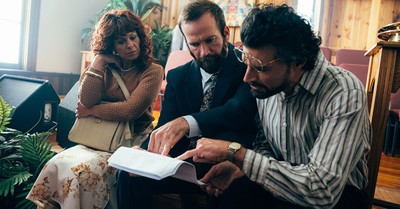From Security to Self Expression: The Classical Education
- Susan Wise Bauer Contributing Writer
- Published Mar 14, 2006

Most modern classical educators divide learning into three distinct phases, following on Dorothy Sayers’ influential essay "The Lost Tools of Learning." These three stages of learning (the grammar stage, the logic or dialectic stage, and the rhetoric stage) roughly correspond to elementary, middle, and high school.
That last phrase ought to tell you that all of us are doing what I like to call "neoclassical" education; we’re taking an ancient pattern and adapting it for modern times. The (neo)classically educated student of today doesn’t necessarily need to know how to write sermons in Latin, or exactly what Plato meant by the "Idea of the Good." But modern students, like their ancient counterparts, need to be taught how to learn. The three stages of "neoclassical education" are designed for just this purpose: Grammar stage students are drilled in basic knowledge; logic-stage students are taught to think critically about this basic knowledge; rhetoric-stage students practice expressing their opinions about the information they’ve learned and evaluated.
The three stages of education are more than intellectual phases, though. They go hand-in-hand with the child’s growing emotional maturity.
Consider the first stage of learning, the so-called "grammar stage." In the classical model, young students in their first years of school are not required to do critical thinking or analysis. Instead, they are simply taught: given information. In this early phase of learning, repetition (chanting and drilling) and memory work are central.
Adults tend to look on repetition and drill as dull and boring, but there are good intellectual reasons why repetition and memory work are appropriate at this age. Until young children have been taught, through repetition, the basic patterns of a field of knowledge, they cannot think critically about that knowledge.
Imagine that you have never studied a foreign language in your life. Someone gives you a list of German words and says, "Analyze these words and tell me, from the patterns they follow, which are nouns and which are verbs." You would have no idea where to begin. If, on the other hand, you’ve already learned French, Italian, and Spanish, you have seen patterns of nouns and verbs repeated in several different languages. Now you can make an abstract theory ("Nouns and verbs will have different forms") and apply the theory to the German words.
Before you could make that theory and use it, you needed a foundation of basic information to build on. Critical thinking demands an ability to think in abstractions, and beginning learners arrive at abstractions through repetition of concrete examples. It is almost impossible to explain to a second grader what state of being means. (If you say, "State of being means … you just are!" they inevitably say, "Are what?") If, on the other hand, you teach the second grader a concrete list of state of being verbs, you are giving her a foundation from which she can generalize. Once the child has memorized those verbs, she can form an abstraction: State of being is that idea which is expressed by the words am, is, are, was, were, be, being, been.
How does a young child understand an abstraction such as love? By seeing, over and over again, concrete examples of what love looks like when Mommy or Daddy or Grammy acts in a loving manner. From hundreds of concrete instances of love in action, the child can begin to understand the abstraction love.
There is also an emotional aspect to the child’s need for repetition. Young children don’t know what things in life stay the same, and what things change. Try to think about the world from the point of view of a first or second grader. Events happen all around you at unpredictable intervals. Christmas comes, and then it goes away, and no matter how often you ask, it isn’t time for Christmas to come back around again. One of your parents leaves home at the same time every morning, and usually comes back, but sometimes both of your parents leave you (with a babysitter) for no apparent reason, and they’re still gone when you go to bed. The world seems chaotic because the young child hasn’t lived through enough cycles of months and years to understand the patterns of life. Not until he’s lived through the yearly pattern of spring-summer-fall-winter six or seven times will he begin to understand that Christmas always comes around at the same time every year. Not until she has seen her parents go out for the evening and then be there the next morning, over and over again, will she realize that yes, they’re always coming back.
Young children fear change, because they do not yet have a strong sense of what things ought to stay the same. And so they have a tremendous need for stability, sameness, and repetition. When you read the child’s favorite book over and over (and over), the child is satisfied because the pages of the book are always the same. Every time you turn the last page, the dog party is still there (to the child’s delighted amazement).
Next week: Logic and Rhetoric: Classical Education for Older Students
Susan Wise Bauer was educated at home, back when homeschooling was unheard of. She lives in rural Virginia with her husband and four children, and teaches literature and writing at The College of William and Mary. She also runs Peace Hill Press, which publishes "Books for the Well-Trained Mind."
Copyright 2006. Used with permission. Originally appeared in Winter 2006 The Old Schoolhouse Magazine. Right now, 19 free gifts when you subscribe. www.TheHomeschoolMagazine.com.



















